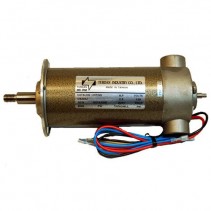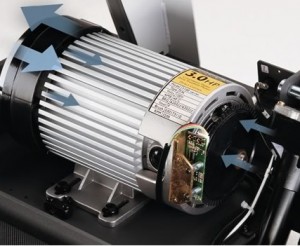If you are planning to buy a new treadmill or even just fix your current model then a key decision is what motor to have. Treadmill Motors are not created equally, they can vary in both quality and power. They are the hardest working part of your treadmill, carrying the weight of the rider and belt.
Deciding which qualities are important to you before buying will ensure that you get the treadmill that meets your needs and goals.
Motor Quality
The first choice is the quality of the motor. Normally you will just see a rating for power, which we will come on to. But the quality is probably the most important factor, as a well built reliable motor will give longer sustained use than a badly built one even if it does have more power. How can you tell that you are buying a quality motor. This is easy, look at the warranty period. Good quality motors will come with a lifetime warranty.
For example, the Lifespan Fitness TR1200i retailing at $999 has a lifetime warranty on the motor.
Poor quality motors may for a short time deliver the stated power output, but they will be noisy and wear out faster. For a safe and long term motor choose one that comes with a lifetime warranty. If the manufacturer thinks it will last then they should know! All of our treadmill reviews include details on the warranty availible. We also have tons of comparison charts to help you zero in on the best choice.
Horse Power
While the quality of the motor can be difficult to judge, after all its tucked away and cannot be seen. The power is easy. All motor are rated by their power output. Measured in Horse Power.
There are a few different ways of rating the horse power:
Basic Power output. This would be rated as horse power or HP for short. This may be called the Peak Horse Power.
Continuous Horse Power: This is the power that that the motor can comfortably sustain up to the rated load, incline and speed of the treadmill.
Its important to understand the difference between HP and CHP. HP will always be a higher number, a motor may produce 5HP for a few minutes before it will burn out and never turn again. CHP is usually about Half the HP Value and represents the power the can be delivered year after year of continuous use.
Always Look for the Continuous Horse Power value (CHP)
How much power do I need?
Depending on what you want to achieve will determine your power requirements:
| Activity | Recommended Power * |
| Walking | 2.0 CHP |
| Jogging | 2.5 CHP |
| Running | 3.0 CHP |
This power is based on a 200lb user. If you plan on having heavier users on the treadmill then 0.5 CHP should be added. If the user is over 300lbs then 1.0CHP would be advisable.
Just a word of caution, many companies will declare similar power outputs, however more reputable manufacturers will give more durable products. Inevitably these will cost more. A treadmill at $1000 vs one at $2000 with the same power is likely to have a lower quality motor.
Type of Power
Electricity comes in two forms, Alternating Current (AC) and Direct Current (DC)
Direct current treadmills tend to be quieter then their AC versions, and slightly more expensive. This is worth considering if you are going to have a number of them in the same room, or if you are planning on watching TV / listening to music while working out.
Buying a standalone Treadmill Motor
T readmill motors can be bought separately from a treadmill. They are great for individual projects or as replacements for existing motors. They are often used to make electric scooters, or for engineering projects. You can expect to pay about $200 for a decent treadmill motor. Our choice is the 2.9 HP Pro form Motor:
readmill motors can be bought separately from a treadmill. They are great for individual projects or as replacements for existing motors. They are often used to make electric scooters, or for engineering projects. You can expect to pay about $200 for a decent treadmill motor. Our choice is the 2.9 HP Pro form Motor:
Summary
In short the two things to look for are:
- Quality – Choose a reputable brand
- Power Output – Pick a model with sufficient power for your needs.
 Optimum Fitness Fitness News and equipment reviews
Optimum Fitness Fitness News and equipment reviews
